Bringing up the topic of the Sailor Moon SuperS anime in conversation can be about as divisive and unwise as discussing politics at the dinner table, religion over Thanksgiving, or subs vs. dubs in a comic book shop. You just don’t know where the other party stands, and no matter what their opinion is, they’re bound to be passionate about it.
But today we’re only skirting around the issue of whether or not the series has any merits, and instead are talking about something we can all hopefully get behind: where did the names of the Lemures come from? Stick around to find out!
I tried to find a good, even way to break up the Lemures used by the villains of the Dead Moon Circus, and the most sensible way I could come up with was to break it up into three parts:
- Hawk’s Eye & Fish Eye (6 and 5 Lemures, respectively)
- Tiger’s Eye (11 Lemures)
- Amazoness Quartet (12 Lemures)
Though this doesn’t exactly fall along the “team” lines as we’d traditionally see it, it does open up room for easier analysis. And I think we can all agree that this is a good thing, right? So let’s get started.
Hawk’s Eye
All of the Lemures that serve Hawk’s Eye, much like those that serve Tiger’s Eye, all have names that end in the character ko, which is a play on the popular Japanese naming pattern for girls, where many names end with the character 子 (ko; child).1 Minako (美奈子) is an obvious example of this, as are Ikuko (育子) and ChibiUsa’s friend Momoko (桃子).
Where he and Tiger’s Eye differ, however, is that he refers to his Lemures with the neutral, but still respectful, honorofic –san. That alone doesn’t tell us a whole lot, but it is an interesting detail about him! So, let’s take a look at his Lemures!
- Do-Kanko: Dokan is an onomatopoeic sound word for describing a loud boom, typically like that from a cannon. You’ll see it a lot in manga where, say, pirates are shooting at each other, or used to describe the sound of a firework being launched. She’s designed after a cannon, so that pretty much explains this one!
- Buranko: This name doesn’t make a lot of intuitive sense to native speakers of English, but her name comes from ブランコ (buranko),2 the Japanese word for swing or trapeze. The word is likely a borrowing from the Portuguese word balanço, which also means “swing” or “balance.”3
- Gittanko: Together with Bakkonko, this duo makes up a common word used by kids to refer to a seesaw — ぎったんばっこん (gittan bakkon). These two words are probably in reference to the noise a seesaw makes as one side goes up and the loud thumping sound made when the other side falls down.
- Autobiko: オートバイ (ootobai),4 or autobi, is a Japanese-English word consisting of the combination of “automatic” and “bicycle,” meaning “motorcycle.” So, as you could have easily guessed from her design, she’s named after a motorcycle.
- Elephanko: Though she’s named after an elephant, her design actually comes from the ball on which an elephant stands in many circus shows.
Fish Eye
So what about the Lemures that serve Fish Eye? Well, one interesting (and obvious) thing about them is that they’re all men. And not only are they men, but they (mostly…) all been given common male names, or endings to names. For example, Taro (generally written as 太郎) is a very common male name in Japan and is often used on forms as a placeholder name, much like we’d use John Doe or John Smith in the west. The female counterpart to Taro is Hanako (花子).
Similar to Hawk’s Eye’s –san honorific, Fish Eye refers to all of his Lemures with the honorific –kun, which is a bit more familiar, and also generally used for men.5
So where did his Lemures get their names? Let’s take a look!
- Tsunawataro: His name is a clever play on the Japanese word for tightrope walking, tsunawatari (綱渡り),6 but modified to turn the verb 渡る (wataru; to cross) from it’s stem form 渡り (watari) to its volitional form 渡ろう (watarou; let’s cross).7 This also incidentally also adds in the clever Taro pun.
- Gum Mario: Not sure how I feel about this name. Typically the convention is to just leave the Japanese names as-is, but this is a weird case where it actually can be misleading. Gum here is the Japanese word for rubber,8 and Mario is a play on mari (鞠; ball) with the -o added to make it a name (also, many traditional Japanese male names end in “o”). So, rubber ball, basically! Personally, I’d at least call him Rubber Mario.
- Mawashitaro: I’m going to admit that I was pretty lost on this one for awhile since his name really has nothing to do with a guy dressed up in a fake Pegasus costume. That’s until I found out that this isn’t his full name. His full name is 回転木馬まわし太郎 (kaitenmokuba mawashitarou). And that makes a whole lot more sense. Kaitenmokuba (回転木馬)9 is the Japanese word for a merry-go-round, and まわし (mawashi)10 means to turn or rotate. With all the Pegasus…es? ii? Pegasii?? Anyway, with all them around, I think it kinda makes sense. Oh, and Taro.
- Kurumiwario: Finally, an easy one to explain! The name comes from クルミ割り (kurumiwari), which is the Japanese word for nutcracker.11 Because he’s a nutcracker. Yep! Then an -o was added on the end.
- Shuffle Furuo: As unexciting as it is, as best as I can tell the latter half of the name is just a play on the sound of the Japanese pronunciation of the word for “shuffle,” meaning shaffuru furuo.
- Tobihaneru: And the winner of the award for most boring name I’ve discussed today goes to… Tobihaneru! The name is the Japanese verb 飛び跳ねる (tobihaneru),12 meaning to jump up and down.
And that brings us to the end of Part 1 of our look into where the Lemures get their names! Next time in Part 2, we’ll be looking at the Lemures that served under Tiger’s Eye, by far the most active of the Amazon Trio, before looking at those under the Amazoness Quartet.
Read on in Part 2 (Tiger’s Eye) and Part 3 (Amazoness Quartet)!
In case you’re curious about the names of all the other monsters of the day, you can find them here:
References:
- See 子 (Jisho.org) ↩
- See ブランコ (Jisho.org) ↩
- See Balanço (playground) (Wikipedia) ↩
- See オートバイ (Jisho.org) ↩
- There are interesting exceptions to this –kun rule for men, but that’s a conversation that sadly has nothing to do with this blog. ↩
- See 綱渡り (Jisho.org) ↩
- See Japanese verb conjugation ↩
- See ゴム (Jisho.org) ↩
- See 回転木馬 (Jisho.org) ↩
- See 回す (Jisho.org) ↩
- See Nutcracker (Wikipedia) ↩
- See 飛び跳ねる (Jisho.org) ↩
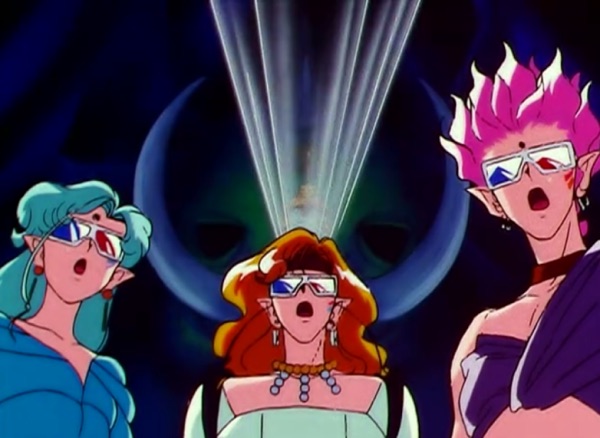
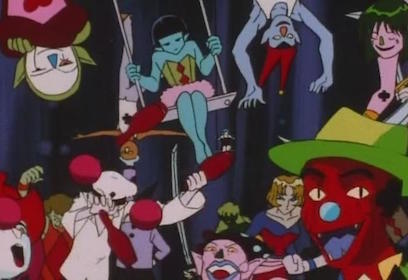
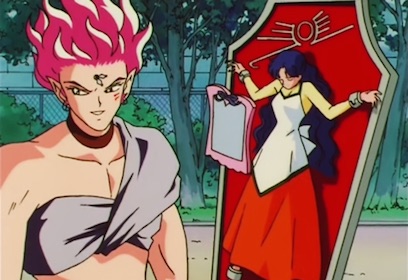
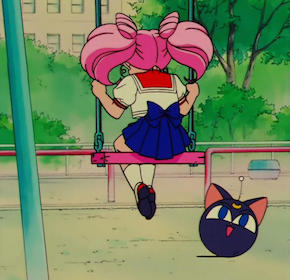
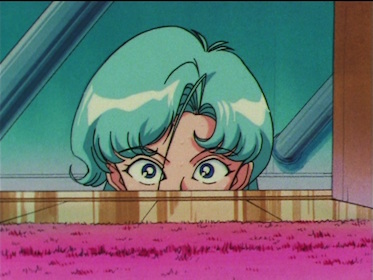



Pegasi. That’s Pegasi.
That’s one less thing to keep my up at night when I’m trying to sleep!
Sorry for the late reply, but I just kind of… didn’t get notified even if I did sign up? Well, never matter. *
I’m very sorry for asking such a rude question, but… what type of school did you attend? (As long as you are eager to answer, of course!) Because, sorry again, but it looked impossibile to me for someone to lack such a basic knowledge of Latin grammar. Aaah, sorry again for the question!
* = …Even if I have to admit it is pretty weird that Ami’s pop-up keeps on showing in spite of me having joined the newsletter months ago.
No worries, and good to hear back from you! =p I was wondering where you went.
As for Latin, to the best of my knowledge Latin isn’t taught in most American schools. You can take it as an elective (much like you could take French or Spanish), but the vast majority of Americans don’t study Latin.
So no offense taken! As for any typos or errors in what I write, unfortunately I only have about 2-3 hours from start to finish to research, draft, cleanup, and post articles. One of these days I’ll properly proofread…
Wow, am I really such an important commenter that you actually rembember my nickname? I definitely didn’t think I had gone that far with all my blabbering XD
OK, I admit I have been too lazy and I could have just looked for some information, but… that’s just how shocked I was over reading someone wonder what the plural nominative of the second declination could be, and I am sorry for that – I sould know better than assuming that people study the same subjects everywhere in the world, so shame on me. On the other hand, the two English (as in, from England) friends I have did study Latin at High School, so I kind of assumed it was a normal thing – admittedly, the majority of us citizens of continental Europe tend to think that UK = USA, more or less, because hey, the language is the same, with the difference that the latter have got an angry Pokémon instead of an old queen. I know it sounds horrible, but that’s how things go down here, and as you’ve seen I’ve fallen into that, too.
Regarding Mawashitaro: Since fantasy beasts like Pegasus often turn up on carousels, maybe this is meant to tie him into the circus theme? (Even though it’s more of a carnival thing, I think…)
(Also, I love your website! I’m just your average lurker…)
Thanks for the comment! And now that you mention it, that may help Mawashitaro make some more sense. He’s just. so. weird!